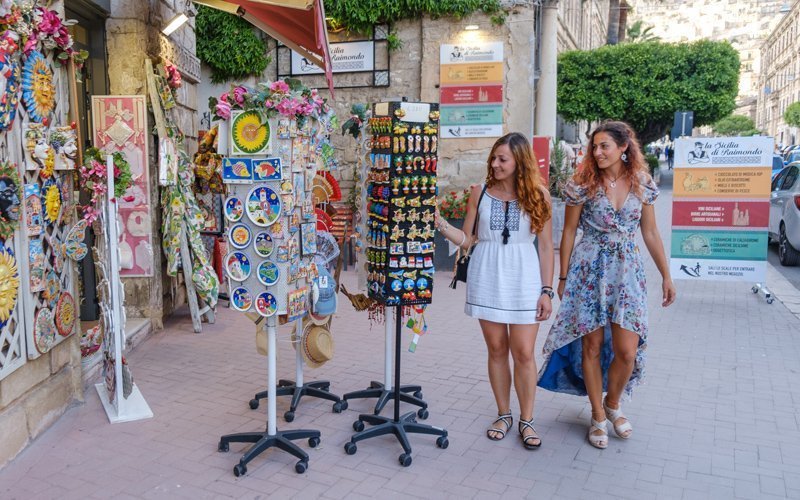I’m a travel blogger from Ragusa and I travel a lot to tell you about the places I visit.
This time I want to tell you about a city where I love to spend most of my evenings, a city that has been a UNESCO World Heritage Site since 2002.
Modica is a city of Neolithic origin, capital of an ancient and powerful county, which boasts a rich repertoire of gastronomic specialities, as well as a great artistic and cultural heritage.
Today it is best known for the production of its typical Aztec-derived chocolate with its unmistakable flavour.
The historic centre of the town, entirely rebuilt after the 1693 earthquake, is divided into two large districts: Modica Alta and Modica Bassa. Today, walking through the streets of Modica means walking along a route steeped in history among late Baroque palaces, churches with majestic staircases and great masterpieces.
The countryside of Modica, characterised by a dense network of ‘dry stone walls’ marking out plots of land, is dotted with majestic carob, olive and prickly pear trees and offers truly evocative landscapes.
Modica is the perfect place for a holiday; an excellent starting point for visiting the baroque towns of the Val di Noto and taking a dip in the clear waters of its coastline, rich in golden beaches.

What to see in Modica?
The urban centre of the city has a very particular shape and extends along a valley and then climbs the surrounding hills. Along the limestone ridges, typical of this area, the inhabitants have literally “dug” both dwellings and tombs over the centuries, so much so that today there are about 700 caves.
The historic centre is a labyrinth of small houses, narrow streets and long stone stairways that rise up around the spur of the Pizzo hill, on which the castle once stood.
There are about 100 churches in these streets, the most important of which, worthy of note, are the Cathedral of San Giorgio and the Church of San Pietro, which stand on imposing and scenic stairways.
The prevailing style of the monuments is that commonly identified as late Baroque, which characterises the whole province of Ragusa.
The Clock Tower
The Castello dei Conti, a fortification built on top of a rocky cliff with sheer walls, was for many centuries the seat of political and administrative power of what was once the County of Modica. In front of the castle is the clock tower, the last vestige of a medieval watchtower.
Today the clock tower has become one of the symbols of the town, which you can find in the little shops in the form of small souvenirs to take home.
What to do in Modica?
During your holiday in Modica you will certainly not run the risk of being bored. In addition to the interesting Baroque monuments, the city offers events, shows and traditional festivals that take place at various times of the year.

Tourism in Modica has been growing for several reasons. First of all, the city’s recognition as a UNESCO World Heritage Site and the promotion of Modica’s chocolate have contributed to making Modica known throughout the world.
In this regard, I recommend a visit to the historic Cioccolateria Bonajiuto to taste the city’s best chocolate.
In the evening, you can take a walk along Corso Umberto I and go to one of the many bars in the town’s historic centre, which is always lively and full of people. Corso Umberto I and Piazza Matteotti are the heart of Modica’s nightlife: stroll along this long street full of bars, pubs and restaurants, open until late at night, and let yourself be enchanted by the spectacular Baroque monuments illuminated by the warm city lights.

A city to be bitten and savoured to the full!
Did you like this article? Make a quote for your next car rental here or discover the other destinations that have fascinated our travelers here.

